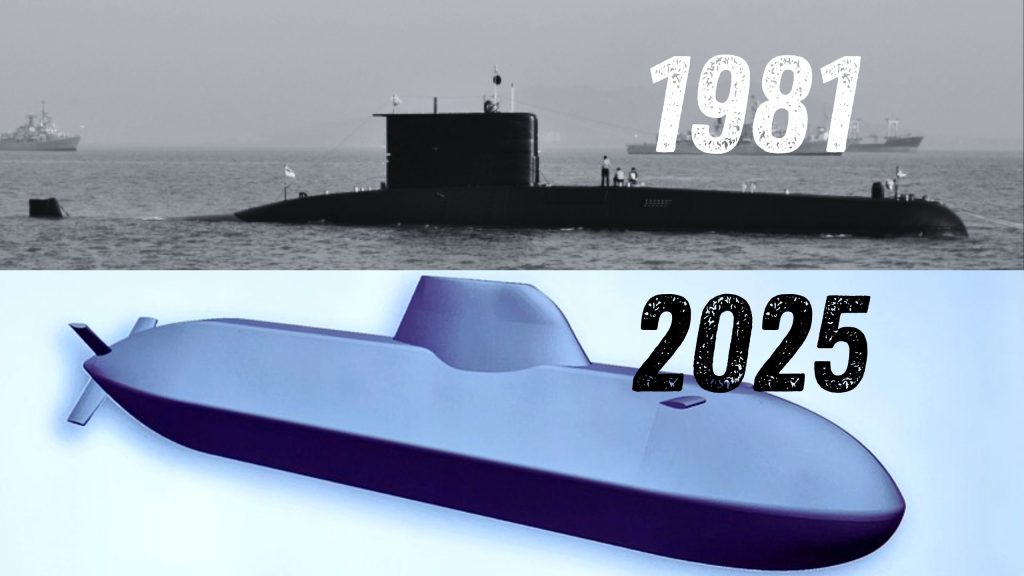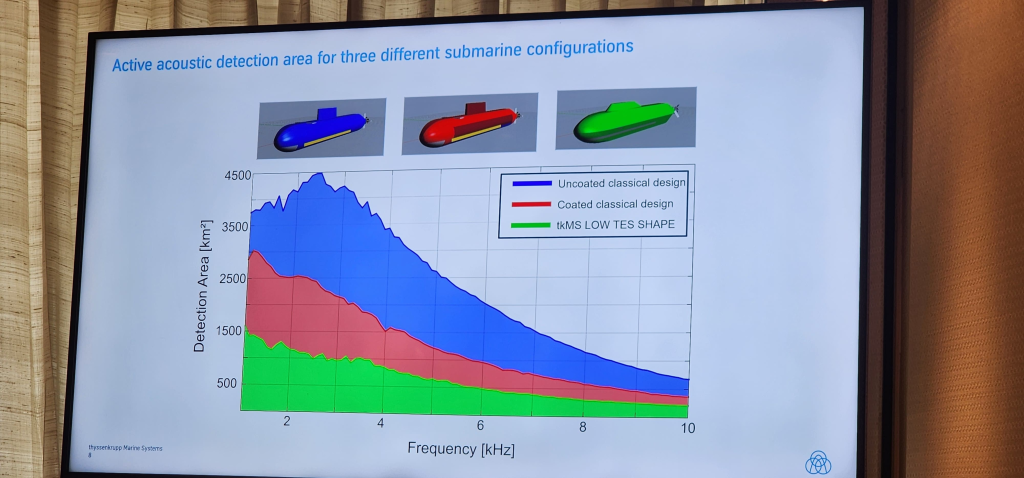
Nearly half a century after it chose to buy and build German Howaldtswerke-Deutsche Werft (HDW) Type 209 submarines for its navy, India has down-selected a new generation submarine offering from the same shipbuilder to meet a requirement of six conventional India-built submarines under the fabled Project 75 India program.
The winning bid from HDW, via its parent company ThyssenKrupp Marine Systems (TKMS), is said to be a modified derivative of the active Type 214 submarine. In July last year, TKMS gave the Indian press a presentation that included artwork of a suggested derivative design that’s both bigger than the Type 214 and has a greater emphasis on stealth. The bid is a partnership between TKMS and Indian state-owned shipbuilder Mazagon Docks Ltd (MDL), the same corporation that built two Type 209 boats in the eighties for the Indian Navy, named Shishumar class in India. All four Shishumar class submarines continue to be in active service.

The Indian Government’s choice isn’t a big surprise. The TKMS-MDL bid edges out a palpably riskier bid by Spain’s Navantia and Indian private sector giant L&T to build the S80. The government’s decision was protested last year by L&T and Navantia, with support from the Spanish Government, triggering the formation of an Indian committee to ensure the down-select process was fair. The committee concluded that the decision to proceed with the TKMS-MDL was transparent and fair in all respects. With the competition out, the Indo-German offering passes technical trials and moves into a phase of techno-commercial negotiations. The deal is expected to be worth over Rs 50,000 crore.
Given the glacial pace of the P75I program thus far, it remains to be seen if commercial negotiations take place in a timely manner. The new submarine production line will be alongside MDL’s Scorpene/Kalvari class submarine line which has just delivered the last of six submarines ordered in 2007. Fortunately, the line won’t be going cold — the Indian MoD cleared the construction of three more submarines of the type late last year, with work all set to begin on those. If things come to fruition in all respects, India will for the first time have two active submarine production lines running in parallel.
Germany’s tryst with MDL hasn’t had a comfortable past. The 1981 deal to buy two Type 209 submarines and build the other two at MDL with the possibility of six more came to shuddering halt after planned two were built. This was due to familiar allegations of commissions and kickbacks that came to be known as the ‘HDW Scam’. The blacklisting of the Germany company completely ruined any chances of building six more submarines and forced the navy to watch as exorbitant investments in a submarine assembly line rapidly evaporated. In signature irony, allegations of corruption petered out with the accused entities receiving ‘clean chits’ and later being cleared to do business once again with India. The taint of alleged corruption — even after a reprieve — meant that HDW (and later TKMS) found next to no opportunities to get a foothold in the country. Which is why India’s choice now is more than just a routine down-select.
India’s decision to opt for any submarine marks a pivotal moment for the Indian Navy as it continues grapples with dwindling submarine strength amid growing strategic challenges in the Indian Ocean Region (IOR). There’s likely a decade till the first boat comes on line, but the act of selection at least reflects rare substantive forward movement on a program that has trudged uncertainly for over a decade. Contenders who’ve been in and out of the meandering contest include a French non-nuclear Barracuda class, Korea’s Daewoo KSS-III, Russia’s Amur 1650 and briefly Japan’s Soryu. In 2019, Russia pushed the Indian government to scrap Project 75 India and simply award the contract to the Russian bid
India’s submarine arm is in urgent need of modernization. Currently, the Indian Navy operates a mix of aging conventional submarines, including the Russian-origin Kilo-class and the German-origin HDW Type 209. While the Navy has six new Scorpène-class submarines under Project 75, delays in delivery and limited numbers have left a critical gap. Against an optimal requirement of 24 submarines, India has fewer than 20 operational boats, with many nearing the end of their service lives. The Type 214 submarine is a modern diesel-electric platform equipped with advanced Air-Independent Propulsion (AIP) technology, which significantly enhances its underwater endurance and stealth capabilities. A modernised, enlarged derivative of the type will likely sport even greater capabilities. This makes it ideal for operations in the IOR, where long-endurance patrols and covert surveillance are critical. AIP tech has been a steady focus area in the new program.
The strategic ramifications of this shortfall are significant. India faces the twin challenges of securing its vast maritime interests and countering the expanding naval presence of China and Pakistan. The Chinese Navy has made significant strides in building a modern submarine fleet, including nuclear-powered boats capable of extended deployments in the IOR. Pakistan, too, has been upgrading its submarine capabilities with Chinese assistance. India’s lagging underwater strength risks creating vulnerabilities in this high-stakes maritime chessboard. Last year, the Indian government cleared a homegrown project to design and build India’s first nuclear-powered attack submarines.

Indeed, thankfully a step forward. TKMS is undoubtedly a great choice, given the German legacy of excellence in submarine design as well as high production quality (which hopefully will be replicated in India). It is a pity however that L&T seems to have lost out. Its own expertise in building heavy equipment, including its role in India’s nuclear submarine program, would have been an asset to P75I. One also hopes that, considering the imminent obsolescence of the bulk of India’s current sub fleet, the Government will go in for a larger number of P75I boats at the outset itself i.e. perhaps 12 vessels, as well as see it fit to exploit the Scorpene line to build another 6, not just 3. That way we can achieve the 24-boat target – already severely delayed – with minimum loss of time. Considering the changed security scenario, what with the Pakistan Navy going in for 8 new Chinese boats and with Bangladesh now clearly a state inimical to India, the 24-boat plan itself may be in need to revision to a more substantial number. Beyond a dozen each of the Scorpene and the modified U214, there ought to be an effort at an indigenous design at an eventual further 12 boats.